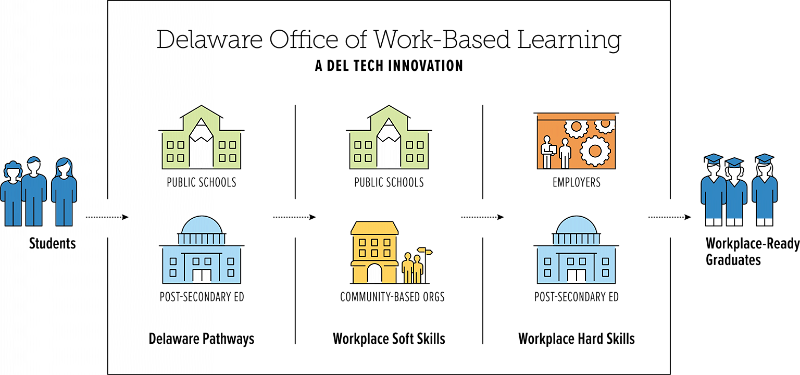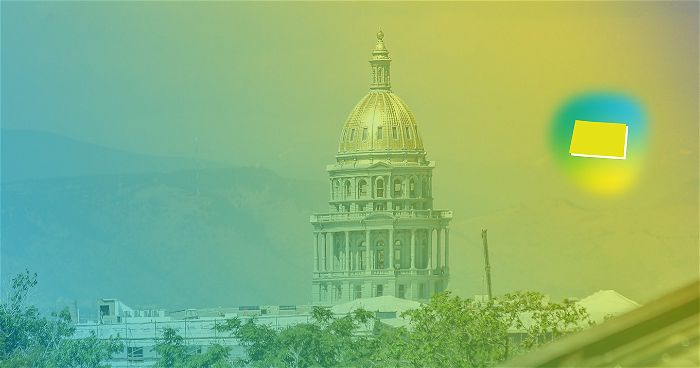Using Federal Policies and Resources to Support Financial and Accountability Incentives
States transforming their education-to-career systems are putting into place statewide policies and resources that support integrated systems. The reality, however, is that states that want to make progress toward connecting high school, college, and careers will have to do so while navigating the confines of federal education and workforce policy and using its power. Although federal silos exist between secondary, postsecondary, and the workforce, federal legislation often provides optional points of flexibility for how states utilize their federal resources (whether through partnerships, braided funding, or accountability metrics). Delaware stands out because it is making the most use of underutilized federal levers and resources in addition to tapping state and private funding supports. States will go further and faster toward achieving the Big Blur’s aims if they use existing federal entry points.
For example, we’ve witnessed Delaware take advantage of available, but optional, federal levers that support its coordinated education and workforce efforts. Delaware is one of only nine states that has a combined Workforce Innovation and Opportunity Act and Strengthening Career and Technical Education for the 21st Century Act (Perkins V) plan that builds in continued cross-agency collaboration and reinforces intertwined accountability metrics. Delaware takes this a step further by embracing the flexibility Perkins V provides states in choosing at least one secondary program quality indicator and determining how to measure “quality.”
In its combined state plan, Delaware did more than the minimum requirement and chose multiple indicators reiterating secondary and postsecondary education should not operate in silos. The cross-cutting reporting metrics include postsecondary credit attainment, work-based learning participation, and attainment of a recognized postsecondary credential. Multiple Delaware governors have viewed combining these plans as essential to coordinating statewide education and economic endeavors. This has helped reinforce collaboration from middle grades through the workforce and moved the state from parallel goals to integrated quality indicators across programs.
Shared accountability metrics across education and workforce systems can help coordinate the state’s efforts, thus increasing the probability the outcomes data will uncover equity gaps and tell a broader story about the successes or roadblocks learners experience while preparing for careers and obtaining good jobs. Coordinating federal resources and accountability metrics builds the education-to-career accountability structure the Big Blur requires.
Additionally, when one-time federal pandemic relief funds became available, Delaware made the most of those resources by braiding Elementary and Secondary School Emergency Relief funds, Governor’s Emergency Education Relief funds, and philanthropic dollars to make Delaware Pathways accessible to an additional 12,000 secondary students and 6,000 middle schoolers. The one-time funding was used for structural costs needed for Delaware Pathways expansion to younger students. Now, the focus is on sustainability, perhaps through a combination of philanthropic and federal funds.
With Perkins newly accessible to middle grades, the scope of federal resources increased. Again, states may define what years count as middle grades. Unlike most states, Delaware took full advantage by starting in grade five, the earliest option possible in Perkins V.
The ability to employ federal policies and funding opportunities to start career pathways earlier and integrate shared accountability measures across systems means that Delaware is continuing to lay the foundation needed for the radical restructuring required of today’s systems for the Big Blur. All states need to navigate federal dynamics, and Delaware’s ability to do so strategically and effectively allows it to meet the immediate needs of Delawareans and start a precedent that the state will make the most of any optional federal opportunities.









